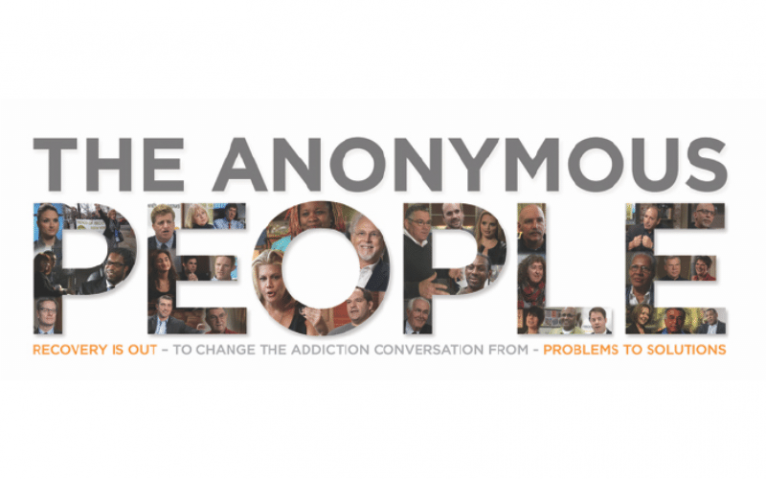The feature documentary, The Anonymous People, directed by Greg D. Williams, first aired in 2013, but it remains relevant today. The film doesn’t come without controversy, as those in and out of the recovery community have opposite views about the documentary. However, regardless of what movie critics say, The Anonymous People has more than succeeded at its goal – to get people talking about both drug addiction and recovery.
Faces & Voices of Recovery is the group behind the documentary, and they continue to support their causes, despite opposition by some people.
The Real Story of The Anonymous People Is Told
The documentary film is a project from Manyfaces1voice, a movement by Faces & Voices of Recovery. The Anonymous People began as a Kickstarter project way back in 2012.
It quickly surpassed its modest $45,000 goal. In fact, by the time their Kickstarter ended, they’d raised upwards of $70,000. The idea was to document some of the over 23 million Americans living in long-term addiction recovery.
“Just like women with breast cancer or people with HIV/AIDS, courageous addiction recovery advocates are starting to come out of the shadows to tell their true stories. This dynamic new public recovery movement is fueling a changing conversation that aims to transform public opinion and, finally, shift problematic policy toward lasting recovery solutions.” – The Anonymous People.
The documentary features various personalities and celebrities and public features, volunteers, and corporate executes, ready to talk about their experiences with substance abuse and their struggles to overcome addiction. Prominent figures featured in the film include actress Kristen Johnston, former senator Harold Hudges, and former NBA star Chris Herren.
Breaking Anonymity in Addiction Recovery
One of the biggest criticisms of the film is that those sharing their stories are breaking their anonymity while living in recovery. While they aren’t the first to break anonymity in addiction recovery, it challenges the fellowship principles. From the 12-step program used in Alcoholics Anonymous, tradition number eleven reads, “Our public relations policy is based on attraction rather than promotion; we need always maintain personal anonymity at the level of press, radio, and films.”
Many believers of this tradition accused the filmmakers of encouraging people to break this tradition and profit from breaking members’ anonymity. However, throughout the documentary, not once does anyone refer to being a member of a specific fellowship. Instead, they identify as “individuals in long-term recovery from substance abuse disorder.”
The Moving Story Behind Faces & Voices of Recovery
The organization behind The Anonymous People is Faces & Voices of Recovery. They’re a non-profit addiction treatment and reform advocacy group formed in St. Paul, Minnesota, in 2001.
A little over a decade since their humble beginning, Faces & Voices of Recovery has exploded, both in membership and scope. They boast over 25,000 members and have many various offshoots.
Faces & Voices of Recovery advocates for a drastic change in public views of addiction, recovery, and addiction treatment. To that end, they’ve lobbied local and state legislatures. They’ve hosted countless events. They’ve strived, for thirteen years now, to affect positive change for those suffering from addiction.
Other Popular Films About Addiction Recovery
Today, there are countless movies about addiction recovery. Perhaps, The Anonymous People stroke a cord because it was talking about addiction from the anonymity standpoint. But many movies throughout the history of film touch the subject of addiction recovery in very touching ways. Films like these show the realities of long-term recovery from alcohol and other drug addiction that can save lives.
- Clean and Sober (1988): Explores the life of a real estate salesman with a nasty cocaine habit.
- Basketball Diaries (1995): The movie journeys through Jim Carroll’s teenage years, from a high school basketball player to a heroin addict.
- Gia (1998): The biographical movie chronicles the demise of America’s first supermodel when she falls under the pressure of methadone addiction.
- 28 Days (2000): Explores the life of a newspaper journalist who spends time in a rehab center after a car accident.
- Russell Brand from Addiction to Recovery (2012): An autobiography revisiting the singer’s years in addiction and recovery.
Finding Help for Addiction
Addiction is complicated and misunderstood disorder, one that carries deeply entrenched social stigma and discrimination. However, these films often offer an insight into a world many of us don’t see or pretend to avoid. If you or someone you know struggles with alcohol and drug addiction, please know there’s help available.
At Lighthouse Recovery Institute, we are committed to helping people find their path to recovery. We look at the underlying causes of addiction through our comprehensive addiction treatment programs to help people find long-term sobriety. If you’re ready to embark on this journey, contact us today.









